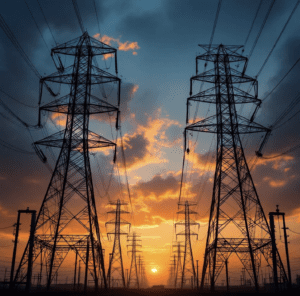The Navajo Generating Station (NGS) in Arizona is scheduled to close by year-end 2019, but intervention by the federal government could keep the West’s largest coal-fired power plant operating. At the same time, more than 300 of the plant’s workers, along with family members, union representatives and tribal leaders, held a rally in Phoenix on June 6, asking for a 90-day pause in efforts to shutter the plant.
The Central Arizona Water Conservation District is soliciting bids for power to pump water from the Colorado River through three of the state’s counties as part of its Central Arizona Project (CAP). A letter from a U.S. Department of the Interior official to the CAP board last week cited a 1968 law that “appears to authorize NGS as a source of power for the project.” Board members are scheduled to look at proposals for electricity on June 7. NGS at present is the main power source for CAP, and board members want to have new sources ready if the plant closes.
Those at Wednesday’s rally chanted “Just 90 days! Just 90 days!,” as they seek more time for the plant’s current owners to find a buyer for the facility. Most of the workers at the NGS facility, located near Page, Arizona, and the nearby Kayenta coal mine, which supplies the plant, are members of the Navajo and Hopi tribes. The plant and mine reportedly have about 750 workers.
The Hopi Tribe and coal mining groups in May sued the water district as part of their plan to halt the plant’s closure.
The CAP was started in 1968—the law authorizing the 336-mile project was signed by then-President Lyndon B. Johnson—as a way to supply water for central and southern Arizona from the Colorado River. The project is the state’s single largest renewable water supply. The federal government has a say in the project because Congress appropriated its funding. The government also owns a 24.3% interest in the NGS, managed by the Bureau of Reclamation on behalf of the Interior Department.
Salt River Project (SRP) and the other utilities with ownership stakes in the NGS, including Arizona Public Service, Tucson Electric Power, and NV Energy, have said for months the plant is no longer economically viable to operate. The current ownership deal expires in December 2019; a search for new ownership has yielded no results, although there reportedly are groups interested in purchasing the facility. Arizona legislators earlier this year approved a tax break for the plant to make it more attractive to potential buyers.
Timothy Petty, appointed last year by President Trump as assistant secretary for water and science for the Interior Department, in a letter to the CAP board last week told the group existing federal law requires the agency to source power from the coal plant. Federal action could preclude closure of the 2,250-MW plant, and a move by the board on Thursday to keep the plant as part of the project’s power supply could improve prospects for finding a new owner and operator.
Petty in his role at Interior oversees the Bureau of Reclamation and the U.S. Geological Survey. In his letter to the district, he wrote: “While the [Interior] Department recognizes that many circumstances have changed since passage of the 1968 Act … it currently believes that the 1968 Act remains the applicable governing authority and must be addressed in any decision relating to future sources of [Central Arizona] Project power. With the 1968 Act in mind, the [Interior] Department expects to consider several options going forward, including the feasibility of continued use of NGS-provided power.”
However, Tom McCann, deputy general manager of the CAP agency, told the Arizona Republic this week, “We don’t view this [the 1968 law] as a big deal.” DeEtte Person, a spokeswoman for the water conservation district, this week said the agency is considering power bids from a solar project along with purchasing power from SRP. She said the group’s “understanding [is] that NGS is closing.” She told the Capitol Media Services news group that “It’s still our understanding that NGS is closing because there hasn’t been a buyer that’s come forward. In the meantime we’ve been looking for power and trying to do our due diligence in lining up the best power sources at the best price to make sure we’re ready for when we don’t have that power anymore.”
The Navajo station at present provides about 75% of electricity for the CAP. Hydropower supplies much of the rest.
Person said she doesn’t think the board is required to buy power from NGS if cheaper power is available from other sources. “There’s certainly plenty of room … should an owner come forward for NGS,” she said. “If there was a new owner, they could certainly put forth their proposal to us for us to buy our power from them.”
The Navajo Nation has previously said it wants to keep parts of the NGS operation even if the plant closes, including transmission lines from the plant that SRP has valued at $80 million. The tribal nation said the lines would allow it to sell power from solar or wind farms in the future.
—Darrell Proctor is a POWER associate editor (@DarrellProctor1, @POWERmagazine)










